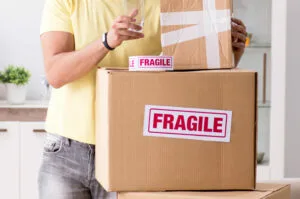When planning a move, nothing causes more anxiety than packing delicate belongings—glassware, artwork, mirrors, electronics, and antiques. These items carry both financial and sentimental value, making them irreplaceable in many cases. Partnering with experts like Flyttfirma Helsingborg ensures that your fragile possessions are handled with care, from packing to unloading.
The good news is that with the right techniques, materials, and mindset, you can move fragile items safely without unnecessary stress. This guide provides step-by-step solutions to protect your valuables and give you peace of mind.
Why Fragile Items Require Special Care
Fragile belongings are more vulnerable during transport for several reasons:
- Thin or delicate materials (glass, porcelain, ceramics)
- Sensitive structures (electronics, picture frames, instruments)
- High susceptibility to scratches, dents, or cracks
That’s why many families rely on moving and packing experts who specialize in protecting breakables with professional methods and tools. Still, even if you choose a DIY move, the right preparation can make all the difference.
Step 1: Gather the Right Packing Materials
Quality packing supplies are your first line of defense. Skimping on materials often leads to damage, so it’s wise to invest in reliable options.
Essential Supplies:
- Sturdy moving boxes (double-walled for extra protection)
- Bubble wrap for cushioning
- Packing paper or unprinted newsprint to prevent scratches
- Foam sheets or packing peanuts to fill gaps
- Stretch wrap to hold items together
- Packing tape for secure sealing
- Fragile labels to alert movers
Pro Tip: Avoid using old newspapers as they can transfer ink to your items.
Step 2: Master the Wrapping Techniques
Each fragile item type requires a slightly different wrapping method:
- Plates: Stack vertically in boxes with bubble wrap between each piece.
- Glasses: Wrap individually, stuff interiors with paper, and place upright.
- Mirrors/Pictures: Use cardboard corners and wrap in bubble wrap before sliding into flat boxes.
- Electronics: Use original packaging if available; otherwise, wrap with antistatic bubble wrap.
- Lamps: Separate the base and shade; pack each part individually.
Step 3: Pack Strategically
How you place items inside boxes matters just as much as wrapping.
- Line the bottom with cushioning material.
- Place heavier items at the bottom and lighter ones on top.
- Avoid overpacking—boxes should close easily without bulging.
- Fill empty spaces with crumpled paper or foam peanuts to prevent shifting.
- Seal boxes tightly with tape and mark “FRAGILE” clearly on all sides.
Step 4: Handle and Load with Care
Even well-packed boxes can suffer damage if not handled properly.
- Always carry fragile boxes from the bottom, not by the sides.
- Don’t stack heavy boxes on top of fragile ones.
- Secure boxes in the moving truck so they won’t shift during transit.
- Use moving straps or blankets to keep large delicate items in place.
Step 5: Consider Professional Assistance
For high-value or irreplaceable items—such as antiques, artwork, or pianos—professional movers provide specialized care. Many offer custom crating, climate-controlled trucks, and insurance options for extra protection. Hiring licensed and insured movers ensures accountability and minimizes the risk of loss.
Common Mistakes to Avoid
- Rushing the process – Fragile packing takes time; don’t leave it for moving day.
- Using the wrong box size – Oversized boxes make items shift too much.
- Skipping labels – Without clear markings, fragile boxes may be mishandled.
- Ignoring insurance – Without coverage, accidents can become costly.
Bonus Hacks for a Stress-Free Fragile Move
- Use towels, blankets, or clothing as extra padding (saves space and money).
- Invest in dish packs—boxes with built-in dividers for glassware.
- Photograph items before packing for insurance claims if needed.
- Create a “high-value” box for jewelry or personal heirlooms and move it yourself.
Final Thoughts
Moving fragile items doesn’t have to cause sleepless nights. With the right supplies, packing strategies, and handling methods, you can protect your valuables effectively. If the task feels overwhelming, turning to experts ensures an even smoother process.
By being proactive and thoughtful, you’ll not only protect your fragile items but also enjoy a safer, less stressful moving day. After all, the goal is not just to move your belongings—it’s to arrive at your new home with peace of mind intact.
